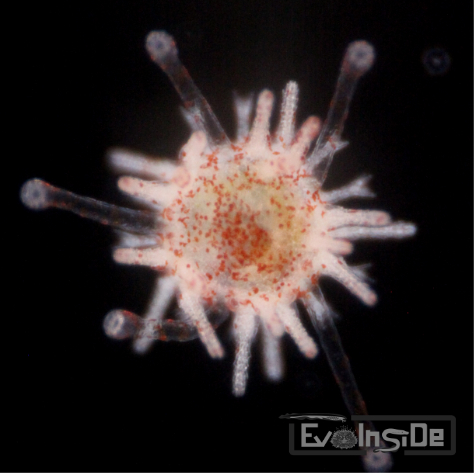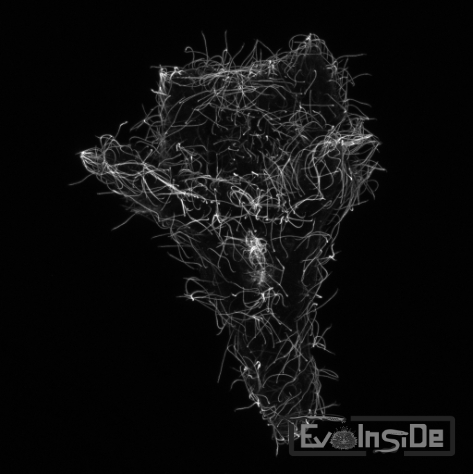interests
Discover our research
projects
Learn about our ongoing work
ANimals
Check out our models
PUBLICATIONS
Explore our publications

The main function of animal nervous systems is to collect, process, and appropriately respond to sensory inputs from the body and the external environment. The composition, structure, and thus overall architecture of nervous systems, however, vary greatly between animals, and despite enormous advances in our understanding of the physiology and the development of these organs, their evolutionary history remains highly contentious. The main unanswered questions are when and how often during evolution centralized (also called cephalized) nervous systems arose. Two opposing scenarios dominate the current scientific discourse. The first proposes that a centralized nervous system first appeared in a last common ancestor and that centralization was subsequently lost in different animal lineages. The second proposes that nervous system centralization took place independently in different animal lineages. The only consensus accepted by both schools of thought is that this issue can only be resolved by characterizing the nervous systems of a wide variety of different animals, especially from so-called “minor/non-classical” animal groups, which is the focus of the EvoInSiDe team.


















Discover our research
Learn about our ongoing work
Check out our models
Explore our publications
In extant chordates, all adult nervous systems are centralized and composed of an anterior brain (or cerebral vesicle), a single, longitudinal nerve cord located dorsally, and various peripheral nerves. In ecdysozoans and lophotrochozoans, nervous systems with an anterior condensation and one or more nerve cords have also been described in members of the arthropods, annelids, and mollusks. The problem with these results, however, is that they are heavily biased by the choice of animal systems. As a matter of fact, many animals lack condensations that qualify as brain or equivalent and are instead characterized by alternative nervous system organizations with basiepithelial nerve plexuses that are associated with subtle condensations and/or longitudinal nerve cords. These alternative nervous systems are found in ecdysozoans (like in priapulids, lociferans, and nematodes) and lophotrochozoans (like in mollusks and lophophorates), as well as, for example, in ambulacrarians (i.e., echinoderms and hemichordates).


Therefore, the question arises as to whether and how these alternative neural structures relate to centralized nervous systems. Are the morphogenetic processes underlying the development of alternative nervous systems comparable to those of centralized nervous systems? Are developing alternative nervous systems characterized by gene expression patterns and neuronal distributions resembling those found in centralized nervous system? Is the development (location, specification, patterning, and differentiation) of alternative and centralized nervous systems controlled by similar genetic processes?
To address these questions, the EvoInSiDe team is currently focusing on the three fundamental aspects of nervous system and neural development in different “minor/non-classical” animal systems:
The underlying research hypothesis of this approach is that, if nervous system centralization occurred independently in several animal lineages, the morphogenetic, molecular, and genetic mechanisms underlying nervous system formation should be divergent. Yet, if centralization predated the evolutionary separation of the studied animal groups, conserved signatures of this single event should still be detectable at each level of our comparisons.
For the latest updates and information on our team, please contact us at: michael.schubert [at] imev-mer.fr / jenifer.croce [at] imev-mer.fr

Laboratoire de Biologie du développement UMR 7009
Cette UE se déroule sur 2 semaines et a lieu au laboratoire de Biologie du Développement de Villefranche -sur-Mer (LBDV). Elle inclut l’examen de l’UE d’analyse scientifique (5V089) suivie par les étudiants de la spécialité de Biologie du Développement.
Durant la 1ère semaine, les étudiants participent à des ateliers et des rencontres avec les chercheurs du laboratoire.
Durant la 2ème semaine, les étudiants sont répartis dans les équipes pour y réaliser un mini projet qu’ils présentent le dernier jour du cours. Le cours est donné en anglais pour tout ou partie.
Modalités d’évaluation
Présentation orale du mini-projet (binôme, 100 %)
UE en anglais (partiellement ou totalement)
Master BMC, S3, 6 ECTS
Code UE: 5V200
Responsable de l’UE: Carine BARREAU (MCU): carine.barreau [at] obs-vlfr.fr
Cette UE permet aux étudiants de 1ère année de Master de passer 2 semaines à l’Observatoire Océanologique de Villefranche-sur-Mer. Le cours est obligatoire pour les étudiants du Master Biologie Intégrative, parcours Biologie et Bioressources Marines (BBMA) tandis qu’il peut être choisi en option par les étudiants du Master Biologie Moléculaire et Cellulaire (BMC). Les étudiants participent à des ateliers de présentation des organismes marins utilisés par les équipes de recherche du laboratoire (LBDV) et apprennent à les manipuler au cours de travaux pratiques dont les thématiques vont de la Biologie du Développement fondamentale à la toxicologie appliquée.
Modalités d’évaluation
Analyse d’article et présentation orale (50%)
Compte-rendu écrit de TP (50%)
UE partiellement en anglais
Master BIP, S2, 6 ECTS
Code UE: 4B022 (ouverte au Master BMC)
Responsable de l’UE: Carine BARREAU (MCU): carine.barreau [at] obs-vlfr.fr
Cette UE complémentaire se déroule sur 2 semaines et permet aux étudiants de découvrir les différents aspects (métiers & recherche) de l’Observatoire Océanologique de Villefranche-sur-Mer (OOV). Ateliers et journal clubs sont organisés afin que les étudiants mettent en pratique leurs connaissances théoriques en biologie et développent leur capacité de communication scientifique en français et en anglais.